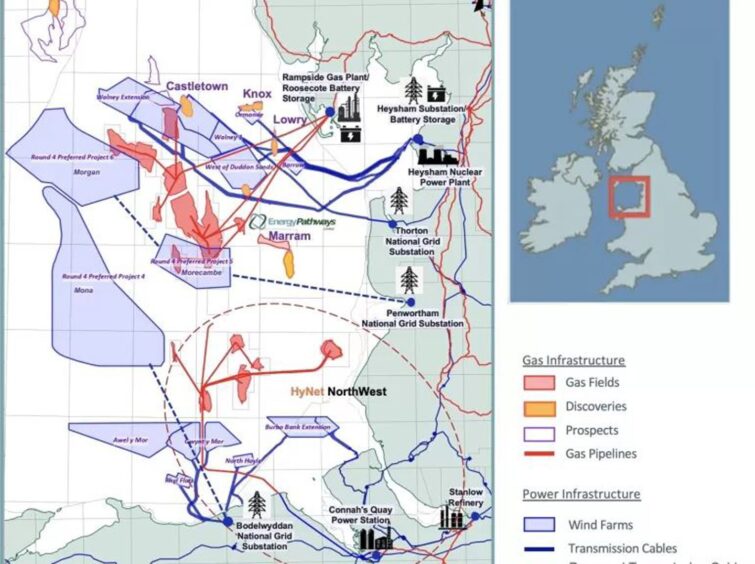
EnergyPathways (AIM:EPP) announced on August 19 that it had submitted a gas storage licence application to the North Sea Transition Authority (NSTA) for its proposed offshore Marram Energy Storage Hub (MESH) project in the UK Irish Sea.
The project is located around 11 miles off the coast of Lancashire, Northwest England, and the licence application covers an offshore area that includes the company’s Marram gas field, which it is also working to bring online.
The MESH proposal includes underground geo-storage capacity of around 50 billion cubic feet (bcf) of gas. This would be equivalent in size to the Rough facility, which is currently the UK’s largest in terms of gas storage capacity.
Under EnergyPathways’ plans, MESH would initially be used to store natural gas produced from Marram, with the potential for conversion to green hydrogen storage in the longer term.
The company has highlighted various aspects of the project that it expects to contribute to its decarbonisation potential. It noted in the announcement that the MESH facility itself would be fully decarbonised and electrified, powered by wind farms in the UK Irish Sea. It also said that the gas supplied from MESH would have a carbon emissions intensity of around one tenth of that of imported LNG.
The firm also recently welcomed news the UK Government was retaining the decarbonisation investment allowance as part of changes to the Energy Profits Levy (EPL) as a “positive indication of the new Labour government’s commitment to support investment in energy transition projects.”
If the MESH facility is ultimately converted to hydrogen storage, EnergyPathways expects this to help address excess offshore wind production that may otherwise have to be curtailed.
The company said wind curtailments currently cost UK consumers over £1b per year and that this figure is anticipated to increase to £5b by 2035. However, it sees MESH as potentially using this excess wind power for the production of green hydrogen, which would also be stored at the facility, providing a long-duration energy storage option.
There is around 7-8 GW of existing and planned offshore wind capacity located near the MESH site. EnergyPathways also said the site was close to late-life reusable gas pipelines and infrastructure, carbon capture and storage (CCS) projects and highly populated areas and industrial demand centres in Northwest England.
The company said it had identified “a number of opportunities” to help decarbonise industrial clusters and gas-fired power generation through the region.
According to the announcement, a number of “major, tier one engineering and energy companies” are interested in participating in the MESH project and provided letters of support for the gas storage licence application. EnergyPathways said it would be advancing negotiations with these companies over the coming months.
“In reaching this milestone for MESH, we are pleased to be bringing forward an energy transition project that strongly aligns with the UK government’s energy policy and objectives,” said EnergyPathways’ CEO, Ben Clube. “With the UK having some of the lowest levels of gas storage of the world’s major economies, and it becoming increasingly dependent on LNG imports, we believe an expansion of the UK’s gas storage capacity will be vital for a dependable and secure energy supply.”
Clube went on to say that if the licence application was successful, EnergyPathways would integrate it into its Marram project development plan ahead of a final investment decision (FID).
Marram is a shallow-water discovery containing an estimated 40-50 of bcf recoverable resources and is 100% owned by EnergyPathways. According to the company’s website, growing spare capacity at existing nearby infrastructure means Marram can be developed “very profitably through a simple tieback”.
The company has said in previous announcements recently that it is targeting first gas from Marram by 2025.
Recommended for you
